Inspiration
At the start of the COVID-19 pandemic, little was known about face mask needs for the general public outside of general recommendations for wear. Disposable ‘surgical’ masks became scarce due to the need to prioritize supplies for healthcare workers, and people with sewing abilities were enlisted in the thousands to volunteer to make cloth face masks for family, friends, and strangers. Early guidelines recommended woven cotton to be used, and patterns could be found online and in resources like the New York Times, which featured detailed instructions to create pleated face masks.


Like many others with the necessary sewing skills, I created masks for family members and friends, and donated hundreds of cloth N95 mask covers to healthcare facilities in Las Vegas and Houston. These masks resulted in loads of scraps – in an effort towards sustainability the scraps were saved for a future project, which became part of the BeMask’d wearable art mask series.
The Flamingo
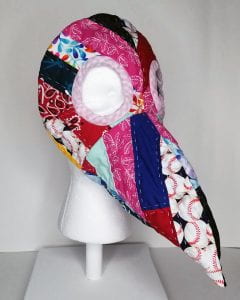
The Flamingo mask was created as a tribute to the volunteer stitchers who donated their time and materials to sew masks for other people in a critical time. The design follows the Plague Doctor silhouette, and is comprised of a stretch denim layer made from upcycled jean pants scraps, an outer layer of patchworked woven cotton scraps seamed together, and an inner layer of cotton quilt batting. The layers are hand stitched together with white basting stitches. The eye openings are a pink and white cotton gingham bias tape left over from homemade mask straps.
The patchworked fabrics were assembled as yardage, then cut to different mask pattern sizes. Remaining scraps were then seamed together to create new yardage, with each successive mask’s patchwork featuring smaller and smaller scraps until they were finished. There were enough scraps to create 3 additional face masks in a shaped style that is contoured to the face. These masks similarly are comprised of a stretch denim base with cotton quilt batting and patchworked scraps as the outermost layer.
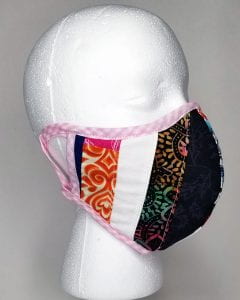
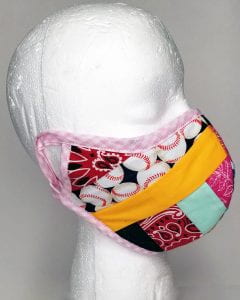


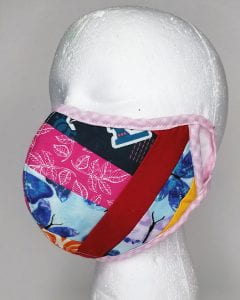
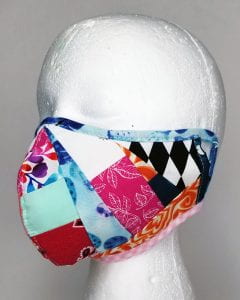
This project is funded in part by the Cornell Council for the Arts. 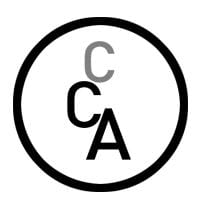

Leave a comment